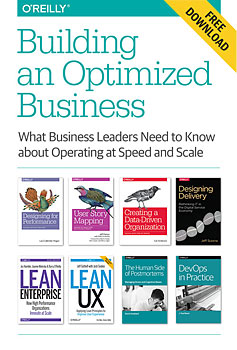- NumericJS — numerical methods in JavaScript.
- P Values are not Error Probabilities (PDF) — In particular, we illustrate how this mixing of statistical testing methodologies has resulted in widespread confusion over the interpretation of p values (evidential measures) and α levels (measures of error). We demonstrate that this confusion was a problem between the Fisherian and Neyman–Pearson camps, is not uncommon among statisticians, is prevalent in statistics textbooks, and is well nigh universal in the pages of leading (marketing) journals. This mass confusion, in turn, has rendered applications of classical statistical testing all but meaningless among applied researchers.
-
Breaking the 1000ms Time to Glass Mobile Barrier (YouTube) —
See also slides. Stay under 250 ms to feel “fast.” Stay under 1000 ms to keep users’ attention. - Modern Methods for Sentiment Analysis — Recently, Google developed a method called Word2Vec that captures the context of words, while at the same time reducing the size of the data. Gentle introduction, with code.
"Velocity" entries

How to leverage the browser cache with a CDN
An introduction to multi-level caching.

Since a content delivery network (CDN) is essentially a cache, you might be tempted not to make use of the cache in the browser, to avoid complexity. However, each cache has its own advantages that the other does not provide. In this post I will explain what the advantages of each are, and how to combine the two for the most optimal performance of your website.
Why use both?
While CDNs do a good job of delivering assets very quickly, they can’t do much about users who are out in the boonies and barely have a single bar of reception on their phone. As a matter of fact, in the US, the 95th percentile for the round trip time (RTT) to all CDNs is well in excess of 200 milliseconds, according to Cedexis reports. That means at least 5% of your users, if not more, are likely to have a slow experience with your website or application. For reference, the 50th percentile, or median, RTT is around 45 milliseconds.
So why bother using a CDN at all? Why not just rely on the browser cache?

From Industrialism to Post-Industrialism
Leveraging the power of emergence to balance flexibility with coherency.

Download
Building an Optimized Business
Download a free copy of Building an Optimized Business, a curated collection of chapters from the O’Reilly Web Operations and Performance library. This post is an excerpt by Jeff Sussna from Designing Delivery, one of the selections included in the curated collection.
In 1973, Daniel Bell published a book called “The Coming of Post-Industrial Society”. In it, he posited a seismic shift away from industrialism towards a new socioeconomic structure which he named ‘post-industrialism’. Bell identified four key transformations that he believed would characterize the emergence of post-industrial society:
- Service would replace products as the primary driver of economic activity
- Work would rely on knowledge and creativity rather than bureaucracy or manual labor
- Corporations, which had previously strived for stability and continuity, would discover change and innovation as their underlying purpose
- These three transformations would all depend on the pervasive infusion of computerization into business and daily life
If Bell’s description of the transition from industrialism to post-industrialism sounds eerily familiar, it should. We are just now living through its fruition. Every day we hear proclamations touting the arrival of the service economy. Service sector employment has outstripped product sector employment throughout the developed world. 1
Companies are recognizing the importance of the customer experience. Drinking coffee has become as much about the bar and the barista as about the coffee itself. Owning a car has become as much about having it serviced as about driving it. New disciplines such as service design are emerging that use design techniques to improve customer satisfaction throughout the service experience.


Four short links: 7 April 2015
JavaScript Numeric Methods, Misunderstood Statistics, Web Speed, and Sentiment Analysis

How to create a Swarm cluster with Docker
Using Docker Machine to create a Swarm cluster across cloud providers.
Problem
You understand how to create a Swarm cluster manually (see Recipe 7.3), but you would like to create one with nodes in multiple public Cloud Providers and keep the UX experience of the local Docker CLI.
Solution
Use Docker Machine to start Docker hosts in several Cloud providers and bootstrap them automatically to create a swarm cluster.


Four short links: 24 March 2015
Tricorder Prototype, Web Performance, 3D Licensing, and Network Simulation
- Tricorder Prototype — collar+earpiece, base station, diagnostic stick (lab tests for diabetes, pneumonia, tb, etc), and scanning wand (examine lesions, otoscope for ears, even spirometer). (via Slashdot)
- Souders Joins Speedcurve — During these engagements, I’ve seen that many of these companies don’t have the necessary tools to help them identify how performance is impacting (hurting) the user experience on their websites. There is even less information about ways to improve performance. The standard performance metric is page load time, but there’s often no correlation between page load time and the user’s experience. We need to shift from network-based metrics to user experience metrics that focus on rendering and when content becomes available. That’s exactly what Mark is doing at SpeedCurve, and why I’m excited to join him.
- 3 Steps for Licensing Your 3D-Printed Stuff (PDF) — this paper is not actually about choosing the right license for your 3D printable stuff (sorry about that). Instead, this paper aims to flesh out a copyright analysis for both physical objects and for the digital files that represent them, allowing you to really understand what parts of your 3D object you are—and are not—licensing. Understanding what you are licensing is key to choosing the right license. Simply put, this is because you cannot license what you do not legally control in the first place. There is no point in considering licenses that ultimately do not have the power to address whatever behavior you’re aiming to control. However, once you understand what it is you want to license, choosing the license itself is fairly straightforward. (via BoingBoing)
- Augmented Traffic Control — Facebook’s tool for simulating degraded network conditions.


Four short links: 20 February 2015
Robotic Garden, Kids Toys, MSFT ML, and Twitter Scale
- The Distributed Robotic Garden (MIT) — We consider plants, pots, and robots to be systems with different levels of mobility, sensing, actuation, and autonomy. (via Robohub)
- CogniToys Leverages Watson’s Brain to Befriend, Teach Your Kids (IEEE) — Through the dino, Watson’s algorithms can get to know each child that it interacts with, tailoring those interactions to the child’s age and interests.
- How Machine Learning Ate Microsoft (Infoworld) — Azure ML didn’t merely take the machine learning algorithms MSR had already handed over to product teams and stick them into a drag-and-drop visual designer. Microsoft has made the functionality available to developers who know the R statistical programming language and Python, which together are widely used in academic machine learning. Microsoft plans to integrate Azure ML closely with Revolution Analytics, the R startup it recently acquired.
- Handling Five Billion Sessions a Day in Real Time (Twitter) — infrastructure porn.


Four short links: 27 January 2015
Autonomous Corporations, Abstract Thought, Down Rounds, and Distributed Messaging
- Decentralised Autonomous Corporations — Charlie Stross’s near-future fiction of Accelerando comes closer to reality: Malice – revenge for waking him up – sharpens Manfred’s voice. “The president of agalmic.holdings.root.184.97.AB5 is agalmic.holdings.root.184.97.201. The secretary is agalmic.holdings.root.184.D5, and the chair is agalmic.holdings.root.184.E8.FF. All the shares are owned by those companies in equal measure, and I can tell you that their regulations are written in Python. Have a nice day, now!” He thumps the bedside phone control and sits up, yawning, then pushes the do-not-disturb button before it can interrupt again. After a moment he stands up and stretches, then heads to the bathroom to brush his teeth, comb his hair, and figure out where the lawsuit originated and how a human being managed to get far enough through his web of robot companies to bug him.
- Coding is Not the New Literacy (Chris Grainger) — We build mental models of everything – from how to tie our shoes to the way macro-economic systems work. With these, we make decisions, predictions, and understand our experiences. If we want computers to be able to compute for us, then we have to accurately extract these models from our heads and record them. Writing Python isn’t the fundamental skill we need to teach people. Modeling systems is. Amen!
- Let’s Stop Laughing at Groupon (Fortune) — it is much easier to survive a valuation decline as a public company than as a private one.
- nsq — Bitly’s open sourced realtime distributed messaging platform.


Four short links: 15 January 2015
Secure Docker Deployment, Devops Identity, Graph Processing, and Hadoop Alternative
- Docker Secure Deployment Guidelines — deployment checklist for securely deploying Docker.
- The Devops Identity Crisis (Baron Schwartz) — I saw one framework-retailing bozo saying that devops was the art of ensuring there were no flaws in software. I didn’t know whether to cry or keep firing until the gun clicked.
- Apache Giraph — an iterative graph processing system built for high scalability. For example, it is currently used at Facebook to analyze the social graph formed by users and their connections.
- Apache Flink — a data processing system and an alternative to Hadoop’s MapReduce component. It comes with its own runtime, rather than building on top of MapReduce. As such, it can work completely independently of the Hadoop ecosystem. However, Flink can also access Hadoop’s distributed file system (HDFS) to read and write data, and Hadoop’s next-generation resource manager (YARN) to provision cluster resources. Since most Flink users are using Hadoop HDFS to store their data, we ship already the required libraries to access HDFS.

The DevOps identity crisis
Why DevOps needs a manifesto after all, but may never get one.

DevOps is everywhere! The growth and mindshare of the movement is remarkable. But if you care deeply about DevOps, you might agree with me when I say that although its moment has “arrived,” DevOps is in serious trouble. The movement is fragmented and weakly defined, and is being usurped by those who care more about short-term opportunities than the long-term viability of DevOps.
They are the ninety-nine percent, and nobody cares
How bad could it be? Travel back in time. It is mid-November 2011, and Occupy Wall Street is occupying the headlines. One of the major reasons is that the protestors are targeting shipping ports on the West Coast, causing shutdowns and even violence. As things are getting out of hand, parts of the movement start condemning these actions as counter-productive, hurting the 99% instead of the intended 1%. Spokespeople for the movement are quoted in the media as saying the instigators “don’t represent the movement.”
Why did the Occupy movement become a footnote in history so fast? There were several reasons: there was no cohesive agreement on its identity, values, goals, and mission; in an effort to be unlike “them,” the OWS proponents avoided anything that looked like centralized leadership; and it seemed to be entirely negative, advocating nothing to replace what it wanted to remove.
I believe a similar thing is happening to DevOps right now, for many of the same reasons. Let’s talk about some of these problems.


Four short links: 24 December 2014
DRMed Objects, Eventual Consistency, Complex Systems, and Machine Learning Papers
- DRMed Cat Litter Box — the future is when you don’t own what you buy, and it’s illegal to make it work better. (via BoingBoing)
- Are We Consistent Yet? — the eventuality of consistency on different cloud platforms.
- How Complex Systems Fail (YouTube) — Richard Cook’s Velocity 2012 keynote.
- Interesting papers from NIPS 2014 — machine learning holiday reading.
